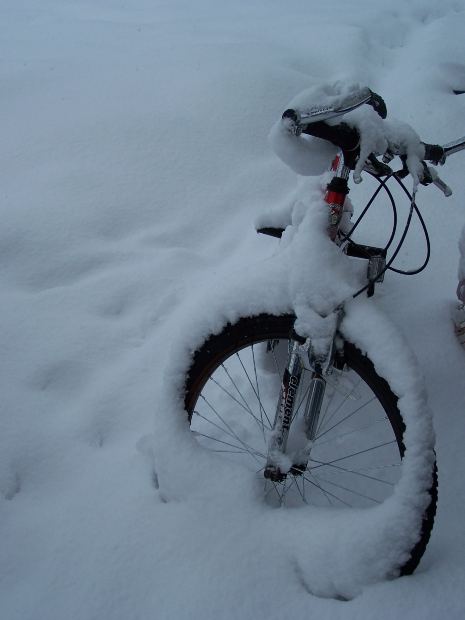
Seven tips for snow-biking
 Surely you already noticed: SNOW IS HERE. And now what? After the first hysterical enthusiasm in front of the window watching how the light dust-like snowflakes were covering everything in white, it is now time for the truth. Face up to the cold – it is just a bit warmer than it was before the snow fell – , grasp your best clothes and… ride the bike! From an international student’s perspective it can sound frightening, a little bit exciting and, who knows? Maybe it feels a bit like fighting with kudos? What at the beginning can look like a challenge, in the end… continues to be a challenge. But don’t quit! There are some tips, known already by the Dutch perhaps, which will be quite useful for the foreigners:
Surely you already noticed: SNOW IS HERE. And now what? After the first hysterical enthusiasm in front of the window watching how the light dust-like snowflakes were covering everything in white, it is now time for the truth. Face up to the cold – it is just a bit warmer than it was before the snow fell – , grasp your best clothes and… ride the bike! From an international student’s perspective it can sound frightening, a little bit exciting and, who knows? Maybe it feels a bit like fighting with kudos? What at the beginning can look like a challenge, in the end… continues to be a challenge. But don’t quit! There are some tips, known already by the Dutch perhaps, which will be quite useful for the foreigners:
1. First of all, you may be young and it is widely known that young people like to be fashionable and stylish, but maybe these white days are not the most appropriate ones to dress up in your best clobber. It is snowy, probably the snow in some places has turned into slimy black slush and, even if you have mudguards, you better be prudent.
2. The more tread on your tires, the better. Maybe you don’t have money to have special tires for snow and you are forced to ride on slicks. If this is the case, maybe you could try bike tire chains. However, you can still check the rest of the tips if placing chains is bothersome.
3. Let some air out of the tires. It is better to ride softly and make them grip the ground. This is probably a less annoying tip concerning changing the state of the bike since all of you are already used to pumping up leaky tires all the time. Now it’s time to do just the opposite!
4. Your senses are your best friends, so be aware of the ground and roads and pay attention to the conditions. You may think the rutted tracks are soft, but they have often refrozen after cars crossed them. In this case, it is better not to force the steering and let the front wheel go where it wants.
5. You are nervous and your hands are grasping the brakes but that is not the best idea. On slippery grounds it is better to do the braking early and in a straight line. But it will always be better to avoid using the brakes a lot. You should also try not to increase your speed too much. If using the brakes cannot be helped, use the back brake. And if you want to use the front one, do it early and straight, early and straight, early and straight…
6. Well, you are getting better. Now that you have the ‘device’ in a good condition and you know how to use it, it’s time to change your attitude. Getting nervous riding a bike in not very stable conditions is quite normal. But you have to control yourself. Don’t be very anxious and avoid riding leaning forward and tense. Try to relax, trust yourself; don’t put the hands on the brakes as if they were going to save you in case of an earthquake. Above all, keep your weight back.
7. And last but not least, try to steer ‘with your hips’ rather than your hands. It will make the whole bike move in a smooth way. Steering with your hands is likely to cause sudden changes of directions which will make you more unstable.
Maybe you still doubt the efficiency of these tips. There is only one way to test them: go outside and try them out. But above all, relax, have more self-confidence and enjoy. After all, what can happen to you? You would just fall in soft and lovely snow!